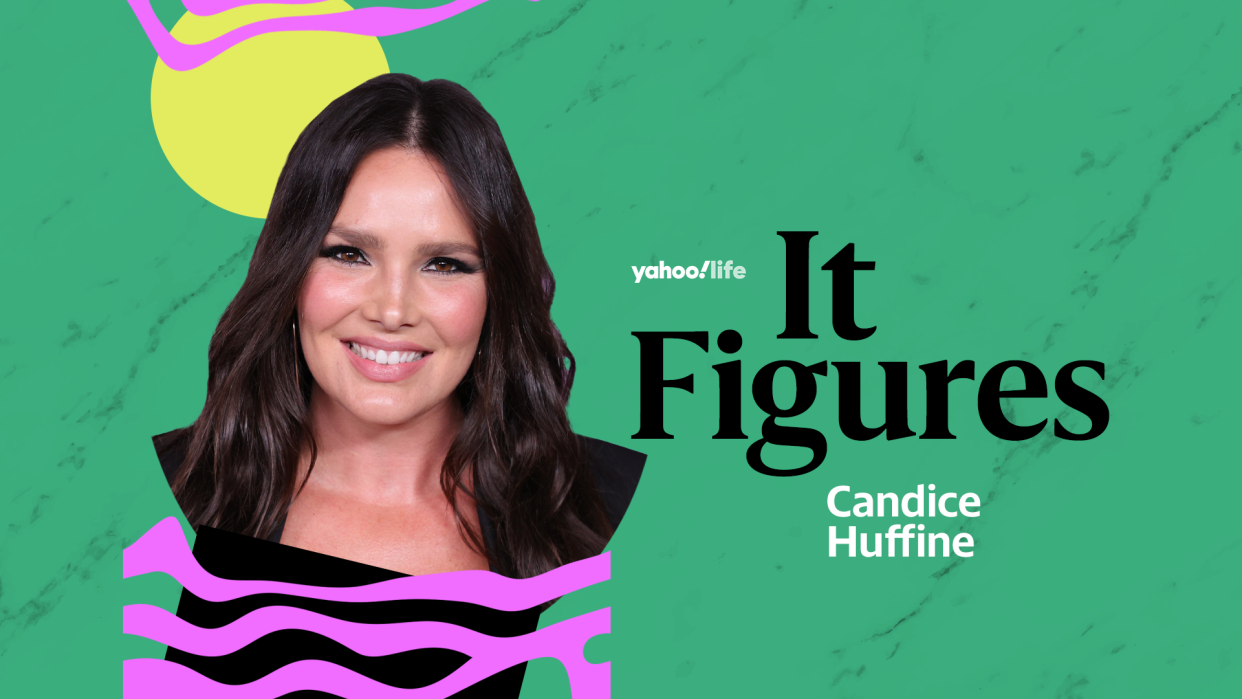Candice Huffine on curves being 'eliminated' in the fashion industry in 2023: 'It's going a bit backwards'

It Figures is Yahoo Life's body image series, delving into the journeys of influential and inspiring figures as they explore what body confidence, body neutrality and self-love mean to them.
Candice Huffine signed her first modeling contract in 2000, as a size 6 curve model. The designated category for models above standard sizing wasn't something she was aware of as a 16-year-old, yet she would go on to make waves for plus-size representation in commercial and high fashion arenas.
Over two decades, Huffine has become a pioneer in the industry by appearing on the cover of Vogue Italia in 2011 and becoming, in 2015, the first plus-size model to be photographed for the Pirelli Calendar. These opportunities have been life-changing for her, but also for people who have gotten to see themselves — often, for the very first time — in her.
"I would love to know if a straight-size model puts this much responsibility on themselves when they go to work in a day. Because it is like a great mission I’ve bestowed upon myself," Huffine, 38, tells Yahoo Life.
Size inclusivity wasn't easy to come by when Huffine first entered the industry. In fact, it's the 2010s — when she first started to find success — that are credited as a "turning point for diversity in fashion," according to Vogue. Her work in Lane Bryant's 2015 "I'm No Angel" campaign alongside Ashley Graham and Paloma Elsesser was seen as opposition to the thin ideal that was still most popular at the time. It was the exposure of these models that made body diversity a plausible idea.
"I know that there's a lot of other curve models that feel the same way," Huffine says, referring to the responsibility she faces. "We understand the importance of imagery, we understand that our picture can be greater than ourselves if we want it to be. We understand that if we're honest and vulnerable and free and vocal, that goes beyond just a picture of us in our bathing suit. It actually could have a really positive snowball effect for someone's inner confidence, for their soul — but also on a bigger level of implementing change in the way that a brand or a designer creates their next collection."
Huffine started to see this type of positive change around 2014. "I've watched new companies form and designers extend their sizes into new ranges. There are all these options now for a variety of curvy women," she told the Telegraph that year. "There are probably 10 to 15 [plus-size] girls who are holding editorials in high-fashion magazines at the moment. It's not a one-off any more. It's almost become the new normal."
Despite the upward trend lasting some years, the fashion industry has since experienced a notably negative shift when it comes to size inclusivity.
"We're losing momentum and it's going a bit backwards," Huffine says of the state of fashion in 2023. "And can't you tell aesthetically and visually that it has?"
According to reports about size diversity — or the lack thereof — showcased throughout the Autumn/Winter 2023 runway season, it is that obvious. "Of 9,137 looks across 219 shows in New York, London, Milan and Paris, just 0.6% were plus-size (U.S. 14+) and 3.8% were mid-size (U.S. 6-12). This means 95.6% of looks presented for AW23 were in a size U.S. 0-4," reports Vogue Business.
"I do feel like as soon as runways made it clear that thin was the trend now or that bodies were going to be a trend in the upcoming seasons, like, everything just switched overnight," Huffine says. "It was hard to actually even keep up with."
She credits diet culture and exclusive clothing trends for the change, and she isn't the only one.
"Skinny is back, jeans are getting lower, things are getting tighter, we're wearing crops, we're being more naked. ... And then it just feels like curves got very eliminated from the conversation," she says. "But I didn't really see that coming."
A reason why it's taken Huffine by surprise is the continuous effort she's made to provide size-inclusive fashion and activewear in her work with 11 Honoré and the creation of the activewear brand Day Won. This, she says, is part of her responsibility as a public figure in a plus-size body. "We can't really express ourselves the way we want because we don't have the ability to attain the things that we want, because someone's not making them for us," she says. She knows from experience, however, that "it's all possible."
She also knows that size inclusivity isn't a trend, but rather the reality of the world we live in. She is determined to continue to represent that by showing up, despite the noise — both external and internal — that suggests she shouldn't.
"My body is in a different place than where I’m used to it being at this current juncture. I'm probably like a size or two larger than I'm used to being right now. And so I'm just maneuvering differently in my own skin lately," Huffine explains, noting that her size was at the back of her mind while preparing for her latest partnership with the lingerie brand Luvlette. "I knew that I didn't feel nor look the way that I normally do in lingerie. But at the same time I knew somebody at home looks exactly like you and she's gonna feel so empowered seeing this photo."
In Huffine's own experience, it's been "disappointing" to feel like there's less of this type of imagery out in the world right now. But, it's "no end of the road," she says. "We keep going. We've been working so hard for so many years, so we've got to all keep pushing forward."


